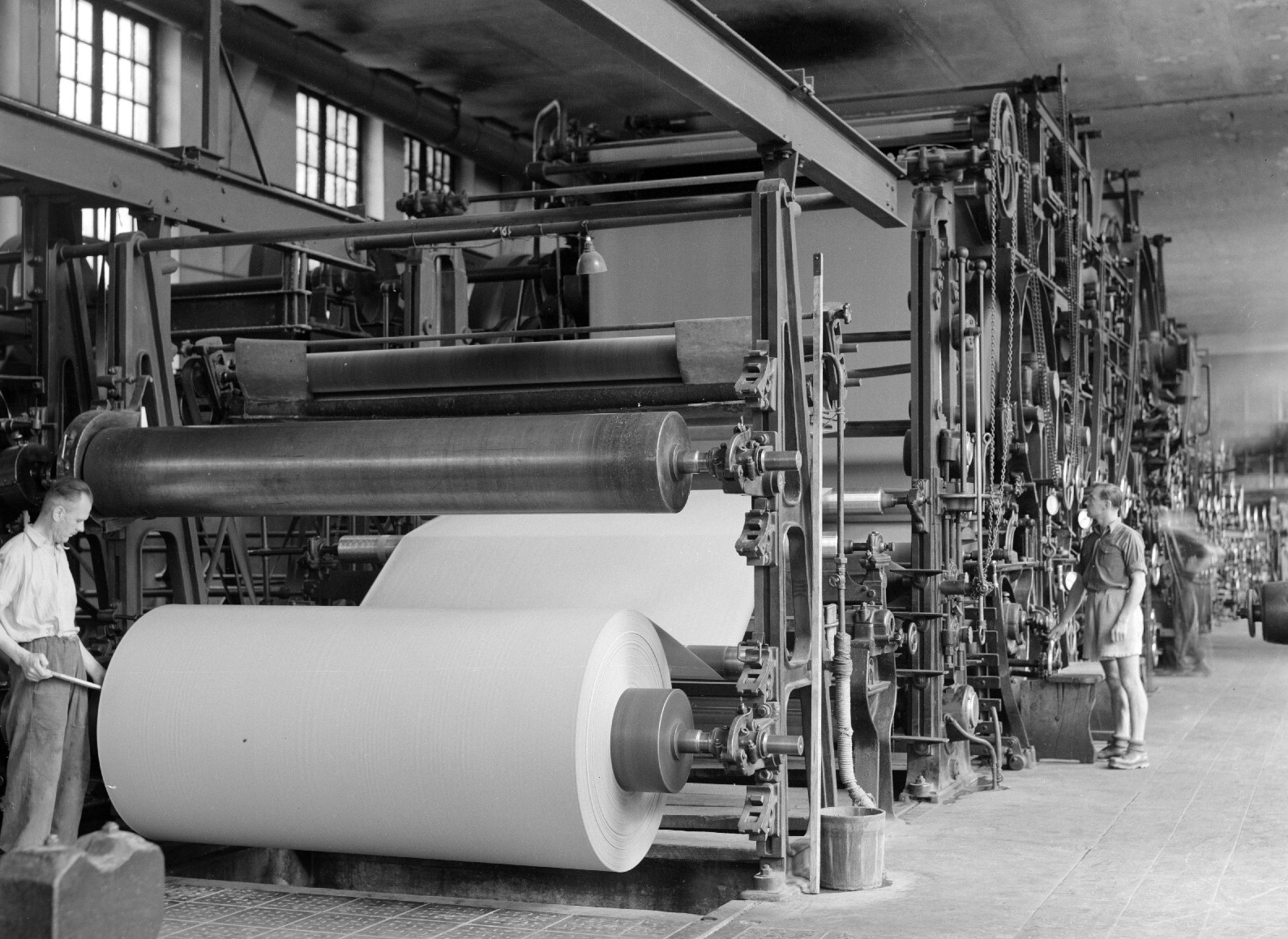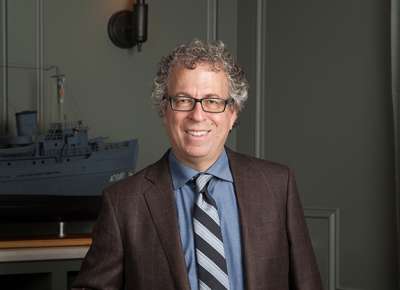A wise man once said that the only real reason you fight a war to is get a better peace. One of the greatest statesmen in US history, GEN George C. Marshall, understood that principle. On June 5, 1947, he gave a speech at Harvard University outlining what he called the “European Recovery Plan”. Winning World War II hadn’t been enough, he told his listeners. We had to make sure that the conditions that led to World War II never reoccurred. We needed political stability on a global scale, and the best guarantee of that was a prosperous international economy. World War II had wrought unprecedented economic destruction, and now it was time to rebuild—not only our allies, but even our former enemies. With a vast industrial base and a homeland essentially untouched by the ravages of war, only America could do it.
Under its informal moniker, the “Marshall Plan” did just that: it restored a shattered planet. In that spirit, we’d like to offer a recent article by one of our Presidential Counselors, Dr. Guenther Bischof, on the continued relevance of the Marshall Plan for our own day. Once again, a great war is raging in Europe, and someday, he reminds us, it will be necessary to rebuild.
Rebuilding the country will cost money. Who should pay for it?
05/26/2022
by Günter Bischof
Whenever the war in Ukraine comes to an end, the question of how to rebuild the destroyed country will arise. And who will pay for it? President Volodymyr Zelensky has repeatedly called for a “Marshall Plan for Ukraine.” Recently, US Trade Minister Pete Buttigieg, in an anniversary celebration for the German Marshall Fund in Berlin, has declared that the USA would support a Marshall Plan for the rebuilding of Ukraine.
The US media is reporting, however, that the United States currently has too many problems with exploding inflation and fears of a recession to think of supporting a “Marshall Plan for Ukraine.” In addition, the decades-long wars in Iraq and Afghanistan have already cost $250B.
Zelensky recently declared that Ukraine needs $7B per month in support. Economists at the University of Kiev have recently estimated wartime damages to the country at 60 billion dollars. The US Congress has just passed a $40B dollar aid package to support Ukraine up to September.
US Congressional elections take place in November, and we can expect that financial support for Ukraine will be a campaign issue. An international donor conference in Poland has recently promised $6.5B in aid. The generosity of the West will be limited in the future, however.
Austria, the Beneficiary
After World War II, the US supported the rebuilding of Europe with a “European Recovery Program” (ERP) of some $13B (today around $160B). The money flowed from 1948 to 1952 to sixteen different countries, Austria one of them. At 14% of its Gross National Product, it received the largest share of Marshall Plan benefits.
A Model for Rebuilding?
The Marshall Plan often appears as a model for a large-scale rebuilding. At the end of the Cold War, for example, suggestions arose for a “Marshall Plan for Eastern Europe.“ Former German Federal Chancellor Helmut Schmidt believed that the prerequisites that had predestined the West Europeans for a successful rebuilding were lacking: a well-educated work force and technical know-how.
Journalist Robert Donovan believed that the Marshall Plan was “the product of a rare combination of circumstances, namely America’s great wealth, Europe‘s productive skills and natural resources, and brilliant leadership on both sides of the Atlantic.“
In any case, Austria should participate in rebuilding Ukraine. The country’s prosperity since World War II goes back to generous American aid programs after the war. We shouldn’t forget that American goods were sold on the domestic market, thus building up the so-called ERP-Counterpart Fund, which became one of the most important investment instruments in a country that was then capital-poor.
In 1961, the Americans handed the entire Counterpart Fund over to the Raab government, which set up the ERP-Fund in 1962. Even today it still pumps around $500M Euro in investments in the economy per year. These very funds would be suitable for participating in rebuilding Ukraine.
The Author
Günter Bischof is the Marshall Plan Chair und Director of Center Austria: The Austrian Marshall Plan Center for European Studies at the University of New Orleans.
This article appeared originally in the Austrian newspaper Die Presse (Vienna). Translation from the German by Dr. Rob Citino.
Original Article
Ein Marshallplan für die vom Krieg zerstörte Ukraine?
26.05.2022 um 17:46
von Günter Bischof
Der Wiederaufbau des Landes wird kosten. Wer soll das bezahlen
26.05.2022 um 17:46
von Günter Bischof
Wann immer der Krieg in der Ukraine zu Ende geht, wird die Frage auftauchen, wie das kriegszerstörte Land wiederaufgebaut wird. Und wer wird dafür bezahlen? Präsident Wolodymyr Selenskij hat wiederholt einen „Marshallplan für die Ukraine“ gefordert. Zuletzt hat US-Verkehrsminister Pete Buttigieg bei einer Jubiläumsveranstaltung des German Marshall Fund in Berlin gemeint, die USA würde einen Marshallplan zum Wiederaufbau der Ukraine unterstützen.
In US-Medien liest man freilich, dass die Vereinigten Staaten derzeit schon zu viele Probleme mit der explodierenden Inflation und Rezessionsängsten hätten, um daneben auch noch einen „Marshallplan für die Ukraine“ zu unterstützen. Und in den Kriegen im Irak und Afghanistan wurden während Jahrzehnten bereits 250 Milliarden Dollar verschwendet.
Selenskij erklärte jüngst, die Ukraine brauche jeden Monat sieben Milliarden Dollar an Unterstützung. Ökonomen der Universität von Kiew haben die Kriegszerstörungen im Land zuletzt mit 60 Milliarden Dollar beziffert. Der US-Kongress hat gerade ein 40 Milliarden Dollar schweres Paket zur Unterstützung der Ukraine bis September verabschiedet.
Im November finden in den USA Kongresswahlen statt, und es ist zu erwarten, dass die finanzielle Unterstützung für die Ukraine ein Wahlkampfthema werden wird. Eine internationale Geberkonferenz in Polen hat zuletzt 6,5 Milliarden Dollar an Hilfe versprochen. Die künftige Großzügigkeit des Westens wird sich aber in Grenzen halten.
Nutznießer Österreich
Die USA haben den wirtschaftlichen Wiederaufbau Europas nach dem Krieg im „European Recovery Program“ (ERP) mit gut 13 Milliarden Dollar unterstützt (heute ca. 160 Milliarden Dollar). Das Geld ging von 1948 bis 1952 an 16 verschiedene Länder, Österreich war eines davon. Mit 14 Prozent hatte es den höchsten Anteil an Marshallplan-Mitteln am Bruttonationalprodukt erhalten.
Modell für den Wiederaufbau?
Der Marshallplan wird oft als Modell für groß angelegten Wiederaufbau gesehen. So wurde nach dem Ende des Kalten Krieges ein „Marshallplan für Osteuropa“ vorgeschlagen. Der frühere deutsche Bundeskanzler Helmut Schmidt meinte, es fehlten meistens jene Voraussetzungen, die die Westeuropäer für einen erfolgreichen Wiederaufbau prädestiniert hatten: gut ausgebildete Arbeitskräfte und technisches Wissen.
Der Journalist Robert Donovan meinte, der Marshallplan sei „das Produkt einer seltenen Kombination von Umständen gewesen, nämlich des großen Reichtums Amerikas, der produktiven Fertigkeiten und Naturschätze Europas und der genialen Führungen auf beiden Seiten des Atlantiks“.
Österreich sollte sich auf jeden Fall am Wiederaufbau der Ukraine beteiligen. Der Nachkriegswohlstand des Landes geht auf großzügige amerikanische Hilfsprogramme nach dem Krieg zurück. Man darf auch nicht vergessen, dass die amerikanischen Hilfsmittel auf den heimischen Märkten verkauft wurden und damit die sogenannten ERP-Gegenwertkonten aufgebaut wurden, die damals in einem kapitalarmen Land zu einem der wichtigsten Investitionsinstrumente wurden.
1961 übergaben die Amerikaner die gesamten Gegenwertmittel der Raab-Regierung, die 1962 den ERP-Fonds einrichtete. Der pumpt auch heute noch ca. 500 Millionen Euro an Investitionen jährlich in die Wirtschaft. Gerade der ERP-Fonds wäre dafür geeignet, sich am Wiederaufbau der Ukraine zu beteiligen.
Der Autor
Günter Bischof ist der Marshall Plan Chair und der Direktor des Center Austria: The Austrian Marshall Plan Center for European Studies an der Universität von New Orleans.
Robert Citino, PhD
Robert Citino, PhD, is the former Samuel Zemurray Stone Senior Historian in the Jenny Craig Institute for the Study of War and Democracy.
Cite this article:
MLA Citation:
APA Citation:
Chicago Style Citation:






![Max Fuchs, New York City cantor, sings as Rabbi Sydney [sic] Lefkowitz, Richmond, VA, conducts the first Jewish services from Germany.](/sites/default/files/styles/max_650x650/public/2025-10/image1.jpg)



